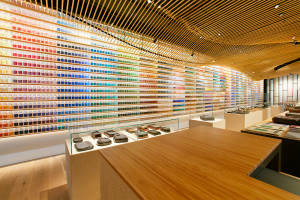
Pigments in layman’s terms are materials that possess certain properties that enable them to lend color to other materials. A lot of varieties of pigments can be found in the market what with them having a wide application in almost all spheres of life. However, the properties of each pigment determine the application for which they are most suited and selected.
Pigments are dry colorants, which are available in a fine powder form and are added to a colorless, neutral material which serves the purpose of a binder. Several classifications of pigments exist in order to distinguish them from one another. The Color Index (CI) categorization specifies the generic name and number of the pigment, for example, Pigment Red 2, CI 12310; the number here summarizes the pigment properties. A five-figure number designated as the CI constitution number is also assigned in cases where the product’s chemical constitution is made known. The basic classification of pigments is the categories of organic and the inorganic pigments. If one were to go by the chemical composition, the difference between the two lies in the presence of carbon in the molecular structure of pigments; organic pigments contain carbon rings and carbon chains while inorganic pigments do not. For example, Naphthol, Diazo and Phthalocyanine are some of the names that belong to the organic pigment category while Cadmium, Iron oxide and Mixed metal oxide are some that get classified into the inorganic pigment category.
While deciding the choice of pigment for any application, what are the criteria that have to be kept in mind? Following are some factors that have to be considered while making the selection of pigments:
- Transparency or opacity
- Staining
- Dispersion
- Toxicity
- Heat Stability
- Resistance to acids and alkalis
- Tinting strength
- Interactions and reactions between pigments
To what extent the above mentioned attributes are important for the application will decide the choice of the pigment. For example, organic pigments are more vibrant and richer in color impartation but are more susceptible to fading on being exposed to harsh chemicals or sunlight than the inorganic pigment varieties. If organic pigment is used in plastics then it gets some protection from weather and light due to the plastic shield while that may not be so in case of inks used in textiles. Therefore, it will exhibit different levels of weather and light fastness. The average particle size of inorganic pigments is closer to the optimum particle size required for maximum light scattering which is not so in case of particle sizes of organic pigments. Hence, inorganic pigments are considered more opaque than organic ones, which are regarded as more transparent. Pigments of the organic variety offer more color strength due to their greater surface area, at the same time; their dispersibility reduces to a great extent. Their heat stability is generally lower than that of the inorganic pigments.
The performance properties and resilience of the organic and inorganic pigments differ and they also vary in different situations. Each pigment has its own strengths and weaknesses depending upon its physical and chemical properties. Accordingly, keeping all the factors in mind they have to be selected suitably for the required applications.